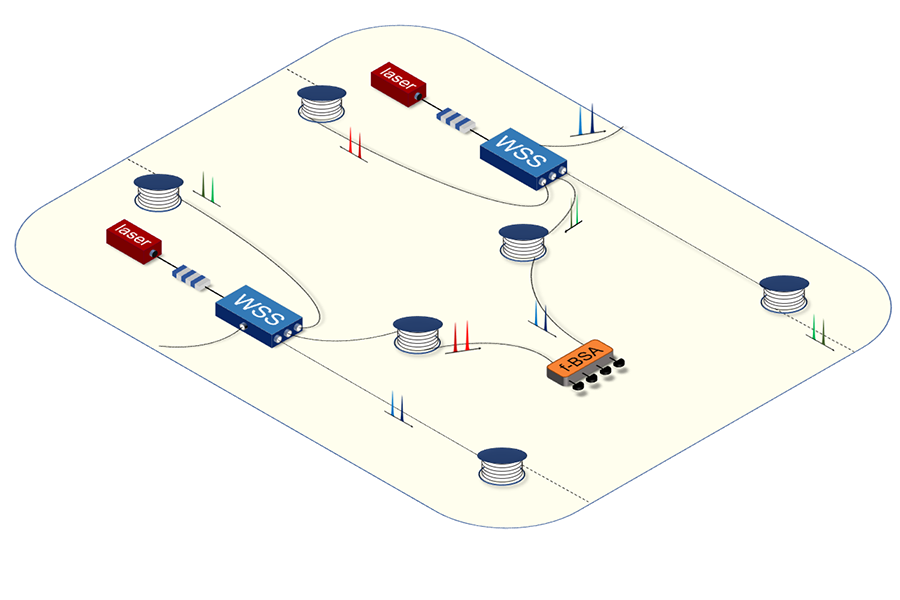Broadband for the Quantum Network

Researchers with Purdue University’s Elmore Family School of Electrical and Computer Engineering, in collaboration with Oak Ridge National Laboratory, SRI International, and Freedom Photonics, have demonstrated a technique that will help quantum networks leverage wavelength-division multiplexing, a technology that allows classical fiber-optic networks to support terabit data rates.
Navin Lingaraju, an alumnus of Purdue ECE who is currently a research scientist at SRI International, says that generating entanglement between physically separated quantum systems, like different quantum computers or different quantum sensors, is a critical area of research as it can support more powerful computation or more precise sensing. To create such entanglement, one photon from each of two quantum computers or quantum sensors is sent to a beam splitter where they interfere in a process known as a Bell state measurement, with the result of this interference that the two quantum computers or quantum sensors then behave as single, potentially more powerful system. But he says the requirements for this process to succeed are quite stringent: the color of the photons sent from each computer, as well as their bandwidth, have to be exactly the same.
“Essentially the photons have to be indistinguishable when they meet at the beam splitter for entanglement to be generated in a straightforward manner without a lot of overhead,” says Lingaraju. “This presents some challenges because if everybody on a quantum network has to send light at the exact same color, then you cannot really do what normally happens in telecommunications, where we load light of many different colors on the same optical fiber so you can have data from multiple channels on a single fiber at the same time.”

Lingaraju says their new method for interfering photons would be compatible with different colors of light. He says this research replaces the beam splitter with essentially a “color splitter” that allows everyone to send whatever color of light they want along a fiber and generate entanglement in much the same way as when identical photons meet at a conventional beam splitter.
Andrew M. Weiner, Scifres Family Distinguished Professor of ECE at Purdue, says cloud computing and distributed computing are ubiquitous and highly impactful. He says the vision of this research is that by connecting quantum computers in different locations through entanglement, more interesting and complicated tasks can be achieved.
“It is not enough for photons to be sent back and forth between quantum computers,” says Weiner. “The photons, which are entangled with their respective quantum computer, need to interact or interfere in some way in order for the quantum computers to be entangled. This accomplished by a Bell state measurement, which commonly makes use of beam splitters to mix two identical photons. Our research demonstrates a new way of mixing photons at different wavelengths to generate entanglement with high fidelity and while making much greater use of the tremendous bandwidth of optical fiber.”
He says the Phase 2 of this research involves putting this technology on a chip so it can be miniaturized, limit the loss, and provide some additional functionality.
Funding: National Science Foundation (2034019-ECCS, 1747426-DMR); Air Force Research Laboratory (FA8750-20-P-1705); U.S. Department of Energy (DE-AC05-00OR22725); Office of Science (ASCR - Early Career Research Program)
